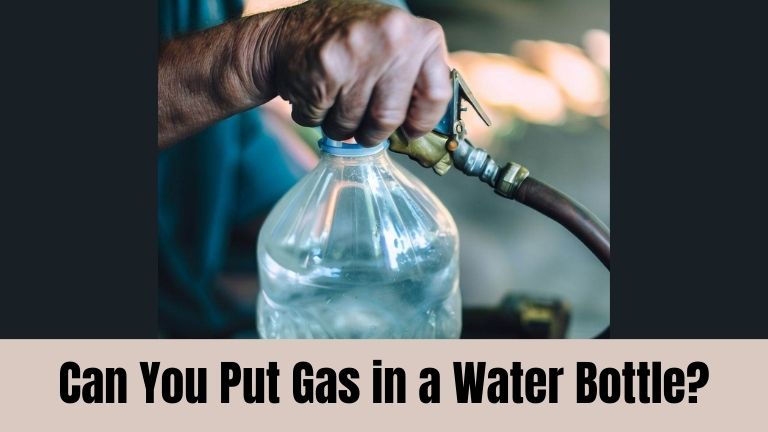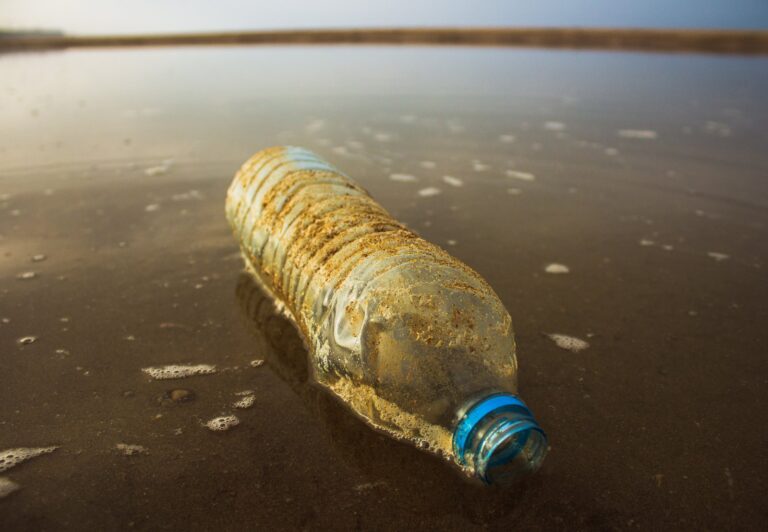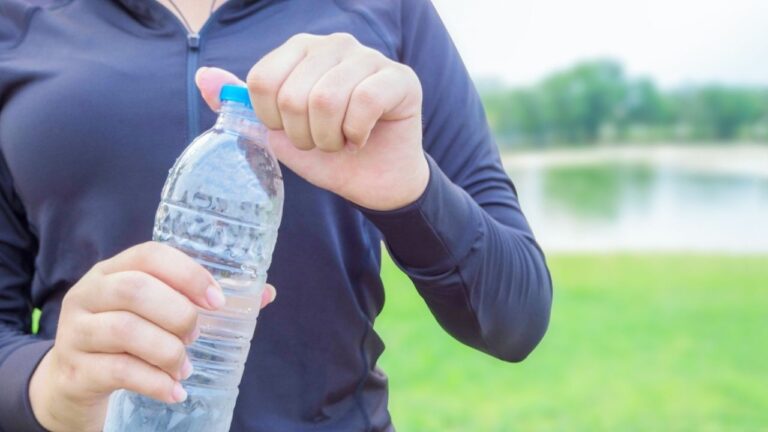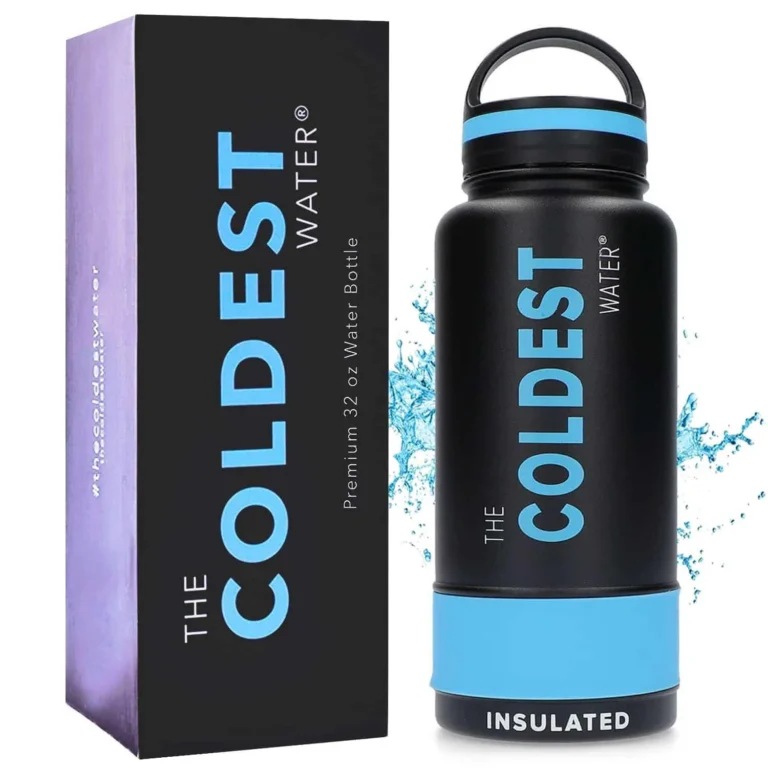Can you put gas in a water bottle? The answer is no, absolutely not. While it may seem like a convenient way to transport fuel, putting gas in a water bottle can be extremely dangerous and potentially deadly.
Not only does gasoline have a strong odor that can permeate the plastic of the water bottle and cause health issues, but it’s also highly flammable.
Gasoline is meant to be stored in containers specifically designed for fuel transportation such as gas cans or approved fuel tanks. These containers are made of materials that are resistant to gasoline corrosion and are equipped with safety measures like vapor barriers and spill-proof caps.
Using anything other than an approved container risks spills, leaks, explosions, and fires which can lead to serious injury or death.
Suggestion: Putting gas in a water bottle is not only illegal but also poses significant safety risks.

Why You Can’t Put Gas in a Water Bottle?
While it may seem like an easy enough feat, there are actually several reasons why gas and water bottles don’t mix.
First and foremost, water bottles are not designed to hold gasoline. The materials used to create water bottles are not compatible with the chemicals found in gasoline. Over time, exposure to gasoline can cause the plastic of the bottle to break down or even melt.
In addition, gasoline is highly flammable and can pose a serious safety risk if stored improperly. Water bottles are not equipped to handle this type of hazard and can easily burst if exposed to extreme heat or pressure.
This could result in dangerous spills or even explosions. For these reasons, it’s important to always use proper containers when handling flammable liquids like gas.
Explaining the Science Behind It
Gas with a water bottle lies in the basic principles of chemistry and physics. Gasoline consists of hydrocarbons, which are highly volatile organic compounds.
When exposed to air, these compounds evaporate quickly and release vapors that can ignite easily. On the other hand, water molecules are polar, meaning they have opposite charges on each end. This polarity makes it easy for water molecules to stick together, forming a cohesive liquid.
When you try to pour gasoline into a water bottle or any other container designed for liquids like water or juice, the hydrocarbons will escape from the liquid and form vapors at the top of the container.
Dangers of Putting Gas in a Water Bottle
Putting gas in a water bottle can be extremely dangerous, and it is something that should never be attempted. Gasoline is a highly flammable liquid that can cause catastrophic damage if not handled properly. When gasoline comes into contact with certain materials, it can ignite and cause an explosion.
Here are some reasons why:
- Fire Hazard: Gasoline is highly flammable and explosive. If the fumes from gasoline come into contact with any source of heat or spark, it can ignite and cause an explosion.
- Health Risks: Gasoline contains harmful chemicals such as benzene that can cause skin irritation, dizziness, nausea, and even cancer when exposed to high levels over time.
- Environmental Damage: Improper disposal of gasoline can contaminate soil, groundwater, and surface water supplies leading to environmental damage.
Alternatives to Using Water Bottles for Gasoline
Gasoline is an essential fuel for many households and businesses, but the packaging it comes in can be harmful to the environment. Most gasoline is sold in plastic water bottles that contribute to pollution and harm wildlife when not disposed of properly.
Fortunately, there are alternatives to using water bottles for gasoline that are eco-friendly and cost-effective.
One alternative option is using metal gas cans or jerry cans. These containers come in various sizes, allowing you to store as much gasoline as you need. They also have a longer lifespan than plastic water bottles and can be recycled easily after they’ve reached their end-of-life period.
Additionally, metal gas cans have secure lids that prevent spills and leaks during transportation or storage.
Another alternative option is using reusable gasoline containers made from high-density polyethylene (HDPE). Unlike single-use plastic water bottles, HDPE containers are designed for durability and longevity.
Solutions for Transporting Fuel Safely
Transporting fuel is a crucial task that requires utmost care and attention. Fuel transportation involves the movement of highly combustible materials, which could be hazardous if not handled properly.
Therefore, it is essential to use safe and reliable methods for transporting fuel to prevent accidents and ensure the safety of the people involved.
One solution for transporting fuel safely is by using specialized tankers designed explicitly for carrying petroleum products. These tankers are equipped with advanced safety features such as anti-roll systems, emergency shut-off valves, and fire suppression equipment, making them suitable for transporting large volumes of fuel over long distances.
Additionally, these tankers undergo regular maintenance checks to keep them in good working condition, ensuring that they are always ready to transport fuel safely.
Another solution is the use of pipeline networks to transport fuel from one place to another.
Conclusion:
In conclusion, putting gas in a water bottle is not only illegal, but it’s also extremely dangerous and can have severe consequences. It’s important to always use proper fuel containers when transporting gasoline and to never use anything that isn’t specifically designed for the job.
Not only can using the wrong container result in fines and penalties, but it also puts yourself and others at risk of injury or even death.
So next time you need to transport gasoline, make sure you’re doing it safely and responsibly. Don’t take any chances with such a potentially hazardous substance. Stay safe out there Nd Read our article: How to Stop Leaking Water Bottle?




